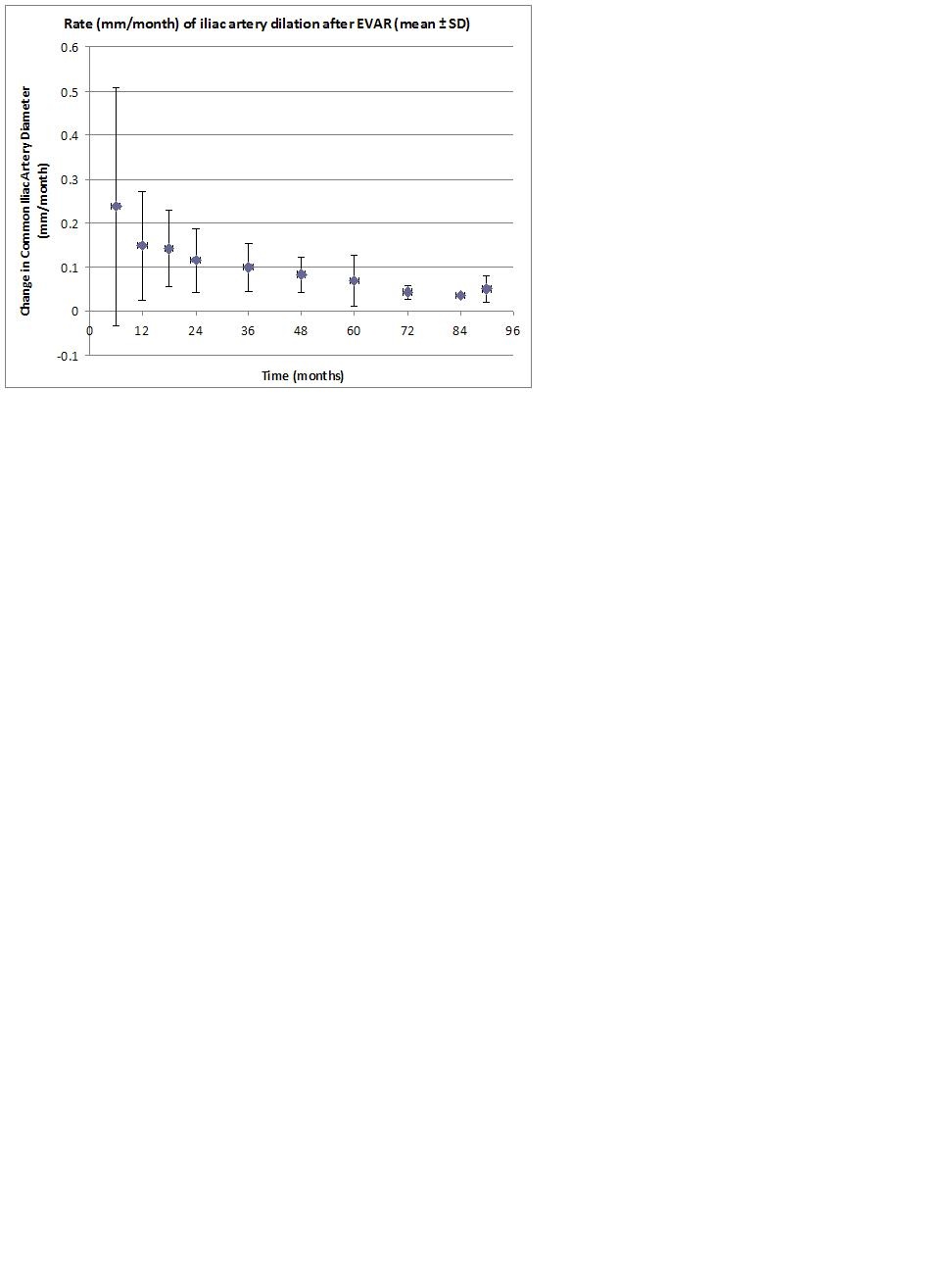Back to Annual Meeting Posters
The Fate of Aneurysmal Landing Zones Used for Endovascular Aortic Repair
Claire Griffin, Chang Catherine, Salvatore Scali, Robert Feezor, Thomas Huber, Adam Beck
University of Florida, Gainesville, FL
INTRODUCTION: Common iliac arteries (CIA) are defined as aneurysmal at 1.5 times the normal diameter, and most would agree that vessels >20mm in size are aneurysmal. Despite this, there are currently commercially-available EVAR devices approved for use in common iliac arteries measuring up to 25 mm and off-label methods such as flipped AUI devices and bell-bottom techniques with aortic cuffs are described to achieve fixation in larger vessels. The purpose of this study was to determine the fate of aneurysmal CIA landing zones used for EVAR.
METHODS: The prospectively maintained institutional database was queried for patients who underwent an EVAR with aneurysmal CIA between 2002 -2011. Procedure details, device type and size, landing zone diameters, and secondary interventions were recorded. All post-operative CT scans were reviewed and landing zone diameters based on the minor axis at the distal end of the stent and 1 and 2 cm proximally were measured along with the length of the landing zone.
RESULTS: In patients with available follow-up imaging there were seventy aneurysmal CIAs identified that were used as the device landing zone. Median follow-up was 25.5 months. There were fifty-five vessels treated within the device instructions for use and fifteen with off-label methods. The rate of iliac dilation was greatest in the first 6 months following EVAR and decreased over time (Fig). The mean growth at 12 months was 2.0 mm (95% CI, 1.6 to 2.4), with no difference between on and off-label landing zones. No type Ib endoleaks developed and two vessels (2.9%) required secondary intervention.
CONCLUSIONS: Aneurysmal CIAs used as a landing zone during EVAR do experience dilation, but this was not associated with an increased rate of re-interventions in a median follow-up of 2 years. These mid-term data suggest that aneurysmal vessels can be used successfully as landing zones in EVAR, but the longer term implications of continued dilation are yet to be determined.

Back to Annual Meeting Posters

